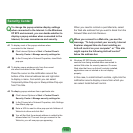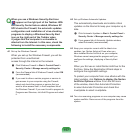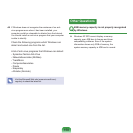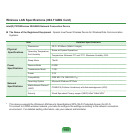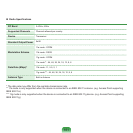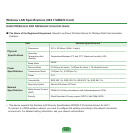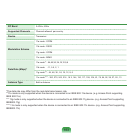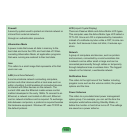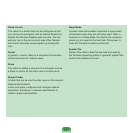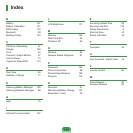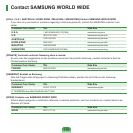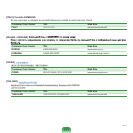
165
Glossary
TheGlossaryliststheterminologiesusedinthisUserGuide.
Forterminologiesotherthanthese,lookinWindowsHelp.
Backup
A way to save the current data to restore it later if
necessary.Abackupisawaytorestorecomputerdata
when the data or computer is damaged.
Client
This refers to a computer that uses a shared network
resourceprovidedbyaserver.
DDR SDRAM(DoubleDataRateSynchronousDynamic
Random Access Memory)
DRAM is a memory type whose cells consist of a
capacitor and transistor manufactured at a low price.
SDRAM is a memory type whose performance has
beenimprovedbysynchronizingtheclockwiththe
externalCPUclock.DDRSDRAMisamemorytype
whoseperformancehasbeenimprovedbydoubling
the operating speed of the SDRAM and is widely used
nowadays. This computer uses DDR SDRAM.
Device Manager
An administrative tool used to manage computer
devices. You can add or remove hardware or update a
device driver using the Device Manager.
Direct X
AnapplicationinterfacedevelopedtoenableWindows
application programs to access hardware devices
at a very high speed. Since the operating speed of
graphics,memoryandsoundcardsmustbeveryfast
to provide high quality video and sound for games,
DirectXenablesfastercontrolandinteractionbetween
applications and hardware devices. By using Direct
X,themultimediaperformanceofWindowshasbeen
hugely improved.
Driver
Softwarethatinteractsbetweenthehardwareand
the operating system. An operating system knows the
hardware information and controls the hardware. In
general, a driver is supplied with the corresponding
hardware device.
DVD (Digital Versatile Disk)
DVD was developed to replace CD (compact disk).
Althoughtheshapeandsizeofthediscarethesame
asthatofaCD,thecapacityofaDVDisatleast4.7GB
while the capacity of a CD is 600MB. DVD video is
digitalunlikeVHS(analog)videoandsupportsMPEG2
compression and digital audio. To play a DVD, a DVD
drive is required.



